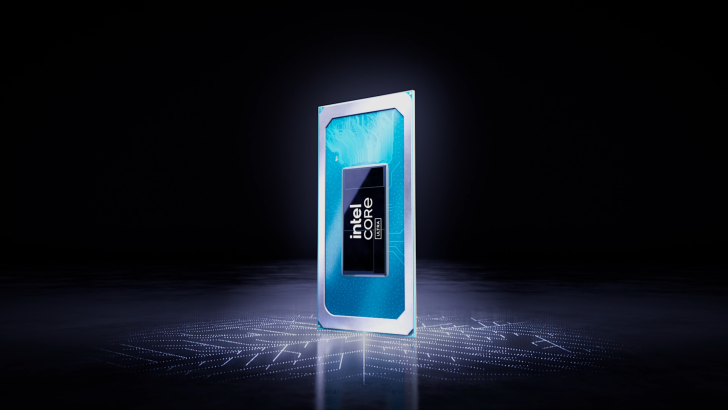The first reviews of Intel’s Core Ultra “Meteor Lake” laptops are out and the Arc iGPU seems to be doing well against AMD’s RDNA 3 iGPU.
Intel Becomes Competitive In the iGPU Space Once Again: Arc Alchemist & RDNA 3 Challenge The Entry-Level Discrete GPU Market
Intel lost its leads within the iGPU space ever since AMD started offering its APUs with integrated graphics. The Vega iGPU family solidified AMD’s grip on the market and with RDNA, the red team entered a whole new realm of devices, powering Mini PCs and handhelds with top-notch graphics performance. Meanwhile, Intel’s Iris Xe solutions had been lacking in the graphics department for some time now but all of that changes today with the introduction of Arc iGPUs in the Core Ultra lineup.
Related Story AMD ROCm 6.0 Source Code Now Available: Supports Instinct MI300, Radeon 7000 GPUs, AI Additions
The Intel Core Ultra “Meteor Lake” CPUs come with three configurations of Arc Alchemist iGPUs that is codenamed “Xe-LPG”. These configurations include 8 Xe-Cores, 7 Xe-Cores & 4 Xe-Cores. These GPUs can boost up to 2350 MHz (Core Ultra 9 185H) and can see dramatic performance scaling when running higher bandwidth memory such as LPDDR5X. These GPUs also come with support for DX12 Ultimate, XeSS (DP4a), and AV1 amongst other things. Overall, this iGPUs is an important component of the latest processors from Chipzilla.
We have seen synthetic benchmarks of the Intel Arc iGPU on various occasions so we will try to report specifically on gaming benchmarks in this article. To start off with the figures, we have to share the tests conducted by Golden Pig Upgrade (Bilibili) who conducted gaming tests on both Core Ultra 7 155H (8 Xe-Cores) and Core Ultra 5 125H (7 Xe-Core) CPUs. The tests cover various games that were tested at 1080p resolution with both High & low settings. The tests can be seen below:
Intel Arc vs AMD RDNA 3 iGPU in gaming at 1080p Low Settings. (Image Source: Golden Pig Upgrade via Bilibili)
In both instances, it looks like the Intel Arc and AMD RDNA 3 iGPUs are very competitive against one another with the top configurations winning an equal split of 4 games each at low 1080p.
Intel Arc vs AMD RDNA 3 iGPU in gaming at 1080p High Settings. (Image Source: Golden Pig Upgrade via Bilibili)
In 1080p High tests, we see the Arc iGPU on the Core Ultra 7 155H leading in 7 out of the 8 games tested. Even the Core Ultra 5 125H retains a lead over the RDNA 3 graphics solution. The outlet is also sharing a graphics ladder which shows that the Meteor Lake CPUs are now much faster than NVIDIA’s MX solutions and end up close to the GTX 1650 Max-Q discrete GPUs.
Entry-Level GPU Performance Ladder. (Image Source: Golden Pig Upgrade via Bilibili)
Considering that there’s a 100 MHz difference in the clock speed between the Core Ultra 9 185H and the Core Ultra 7 155H, we can expect even better performance. The results were carried out using LPDDR5X-7467 memory and it is explained that the RDNA 3 GPUs don’t scale as well as the Meteor Lake Arc iGPUs when running faster memory:
Memory scaling between Intel Arc and AMD RDNA 3 iGPUs. (Image Source: Golden Pig Upgrade via Bilibili)
While the faster memory is appreciable, it should be pointed out that such laptops do come at a higher cost and based on what we have seen in terms of pricing for the Meteor Lake laptops, those are positioned at a very premium price point so yeah, AMD would have the edge in terms of pricing for its Ryzen 7040/8040 family of laptops.
Finally, there are the power efficiency figures which show that the Core Ultra 100H CPUs offer higher performance than AMD Ryzen 7040 “Phoenix” CPUs in the graphics department at 28W+ TDPs but AMD has a lead at lower TDPs below 25W. Intel does have the more low-power oriented Core Ultra 100U chips which are designed around 9-15W TDPs so those might be a better solution for entry-level and handheld devices which are expected to launch in the coming months.
Intel Arc and AMD RDNA 3 GPU Performance Efficiency. (Image Source: Golden Pig Upgrade via Bilibili)
Other tech outlets have also shared their gaming performance tests for the Intel Core Ultra Arc iGPU which looks great against AMD’s RDNA 3 iGPU. Tests from Dave2D, HardwareCanucks & Jarrod’s Tech all show respectable performance gains over the previous generation Iris/UHD GPU solutions and competitive positioning against AMD’s RDNA 3 GPUs. These figures also explain why AMD might have chosen to stick with the same specs/clocks in its RDNA 3 GPUs for the Ryzen 8040 “Hawk Point” refresh.
With driver updates, AMD can offer further performance in the areas where they are lacking or where Arc iGPU is just barely faster. Intel also has a new driver out but given that the iGPU space has competition once again, we can expect more developments on the driver side of things from both camps.
This will be especially crucial for the upcoming gaming handhelds which will feature these iGPU solutions based on the Intel Arc and AMD RDNA 3 architectures. It will also be super interesting to see the full capabilities of Intel’s Arc iGPUs when Min PCs hit the market as these chips can scale up to 115W (Core Ultra 9 185H) and unconstrained access to a higher power can lead to some huge performance uplifts and some great overclocking capabilities. These performance figures are just a teaser of sorts for what’s to come in the Core Ultra iGPU department so expect more updates in the future as more devices and solutions become avaialble.










